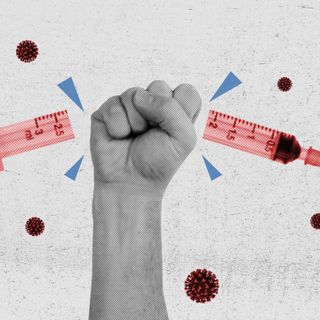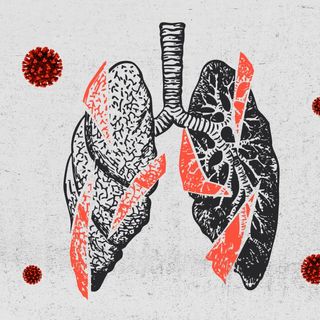Hiccups — the annoying, stubborn interrupters we all love to hate — have spurred many urban legend-like stories, mostly aimed at making us feel better when they happen. Someone’s thinking of you, or missing you, is the most common feel-good myth we have devised to explain away the mysterious phenomenon. Familial remedies of how to cure them are also manufactured out of the same imaginations — count to seven and hold your breath; pull on your tongue, swallow a teaspoon of sugar. Needless to say, none of these are supported by any conclusive scientific evidence.
Hiccups have baffled scientists for a long time — they are ubiquitous but provide no physiological advantage whatsoever. And if hiccups are a vestigial (essentially useless) phenomenon, then why does the evolved modern-day human still have them? What science does know about hiccups, thankfully, provides an equally absurd evolutionary explanation worthy of challenging even the best of imaginations.
Scientists believe the brain signals that facilitate hiccups are left over from a previous evolutionary stage. Hiccups are a recurring phenomenon, examples of which can be found throughout history. Take the tadpole, for instance — at a certain point in its development, it starts to transition to a full-grown frog, at which point it has both gills (to breathe water) and lungs (to breathe air). When the tadpole breathes water, it closes the glottis (the opening of the vocal cords) so that the water doesn’t go into the lungs, and instead can be passed through the gills. Scientists believe the mechanism in the brain that facilitates this periodic closing of the glottis, called central pattern generator (CPG), is a vestigial remnant from when some aquatic life slowly transitioned to land hundreds of millions of years ago.
Related on The Swaddle:
Why Sneezing Is So Weird
Today, this CPG functions in a similar way in humans. Hiccups arise out of a complicated motor act, during which the diaphragm and accompanying chest and neck muscles contract suddenly. When the diaphragm is irritated for example, from heartburn, ulcers, too much food or alcohol, it can suddenly contract, pulling downwards and sucking in air. This sudden contraction causes the glottis to snap shut, preventing any air from passing to the lungs, which produces the ‘hic’ sound. The subsequent burp occurs as a result of the roof of the mouth, and the back of the tongue, moving up, allowing for a huge gasp of trapped air to escape out again. This has led scientists to surmise a CPG must exist in human brains that sends this recurring, periodic signal to control movement of the glottis, much like how actions like coughing and breathing are controlled.
The CPG, however, has evolved to be conditional. Humans are not hiccuping all the time, which led scientists to explore what triggers the CPG. This, however, proved not to be an easy feat. Most research surrounding hiccups can only be conducted among people who have a pathological hiccuping problem, which scientists have traced to an infection in the diaphragm, brain lesions, or issues with any of the nerves — phrenic, vagus — that carry messages to and fro between the involved neural and muscular systems. In addition to gastric problems, research shows physical trauma (to the head, for example) and tumors can also cause hiccups — all of which affect the operations involved in hiccups, from the stomach to the brain and central nervous system.
Another theory for why hiccups happen involve babies in utero. While they get their oxygen from their mother’s placenta while in the womb, they have to immediately learn to breathe once they’re born. “You have to have a breathing apparatus that is already trained,” a professor of gastroenterology at Northwestern University, Dr. Peter Kahrilas, tells Live Science. Hiccups begin in-utero, Kahrilas says, as a training mechanism for babies to learn to breathe, but because the fetuses are surrounded by a sac of blood and fluid, their glottis learns to snap shut to protect their lungs. Newborns also continue to hiccup frequently in the early years of their lives, which neurology and physiology research fellow at the University of London, Lorenzo Fabrizi tells Live Science, is a way for developing brains to form ‘body maps’ that help babies acquaint themselves with their breathing apparatus.
These, however, are merely logical theories. As neuroscientist Robert Provine tells Vox — Essentially, “we still don’t know what hiccups do, and our cure for them hasn’t improved since Plato.”




